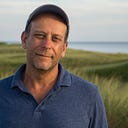Member-only story
Why I Became a Science Writer Instead of a Scientist
On a hot, oppressive day in 1988, an ecologist’s Chesapeake Bay retriever named Muddy made off with my socks. The ecologist shouted at his poor dog, ordering her to return along the tree trunk that had brought her out to the edge of a pond. But all that didn’t make much sense to Muddy. She whined and swiveled her head between ecologist and pond. Finally, she chose pond, and with a splash, doomed me to a day of counting trees in wet socks.
I lowered my head and looked out across Little Howard Pond, one of a dozen Adirondack puddles I’d be surveying that summer. An arc of birch and maple ringed the pond — spindly, sad trees I would have to count in the afternoon ahead. Muddy had had the right idea. What was the point of this endless tabulation of nature? I’d been counting things for so long that all the data points blurred together into a number cloud of random digits. True enough, Muddy. Might as well jump in a lake.
I never figured myself for a professional counter. I’m a terrible counter. A virtual numerical dyslexic. Sometimes I get mixed up counting out the years of a decade when starting from zero. Is that a sequence of 10 or 11? I still don’t quite know. I only signed on to the counting racket out of desperation. A few years before my work with Muddy and the ecologist in the Adirondacks, my mother undercounted the money in…
